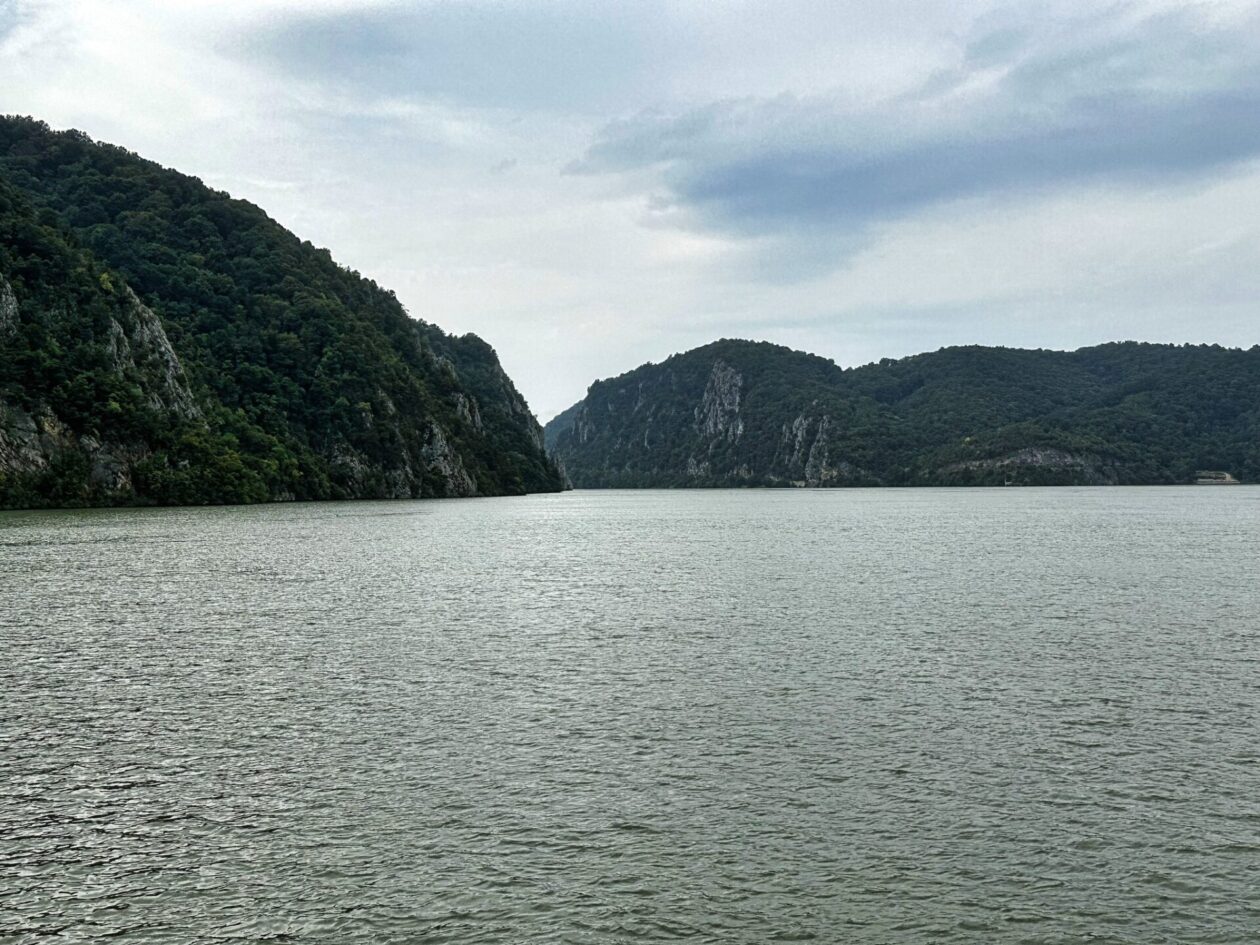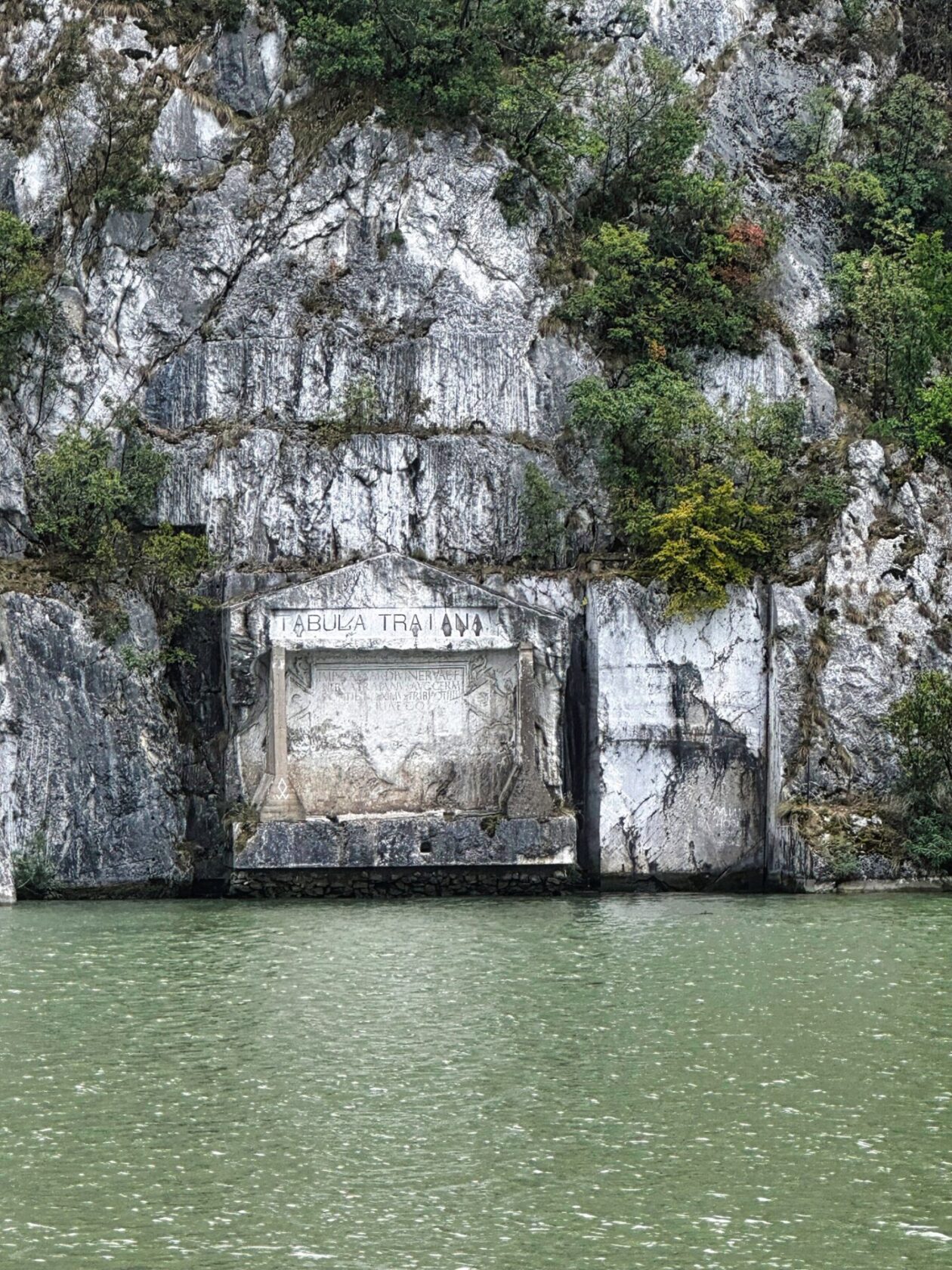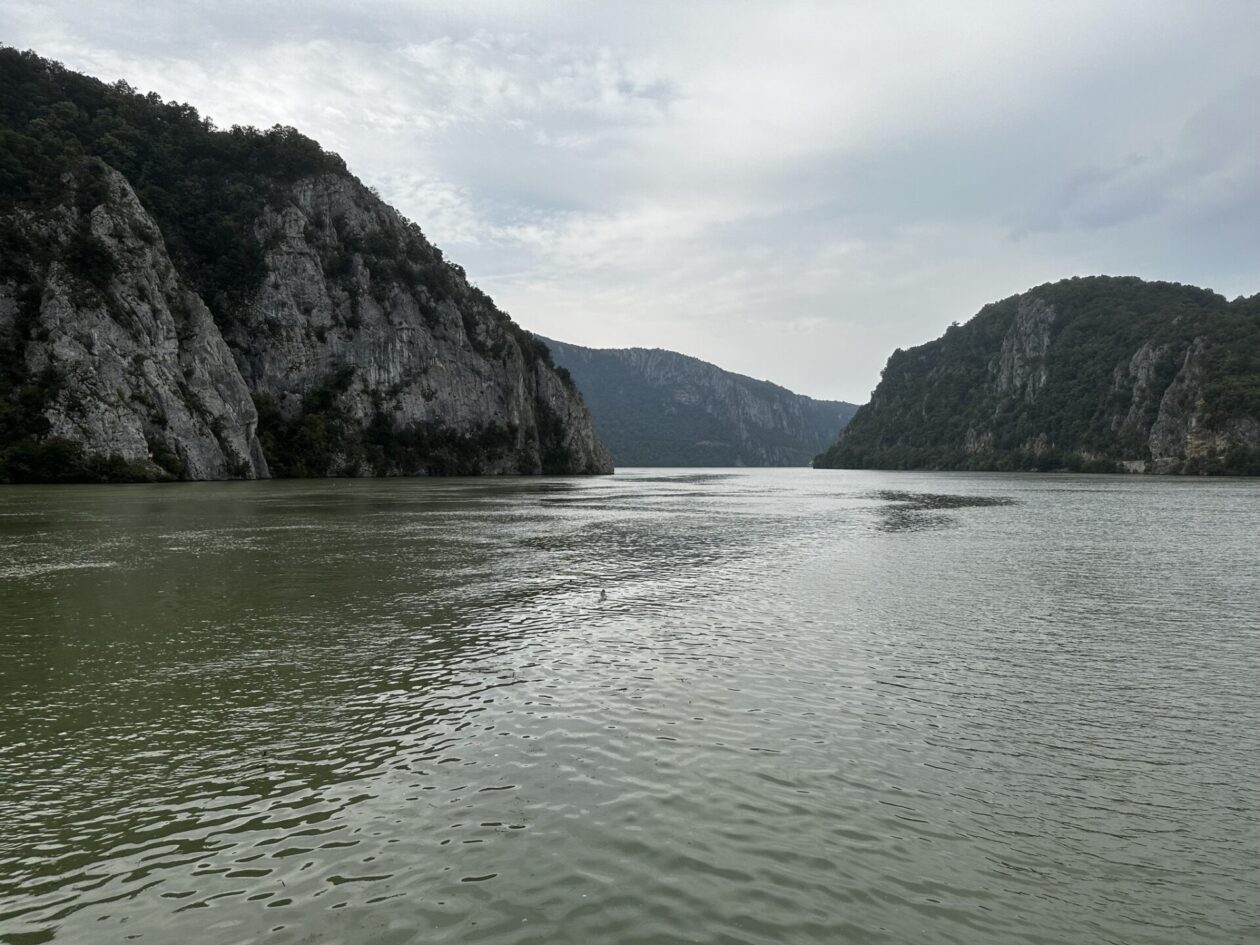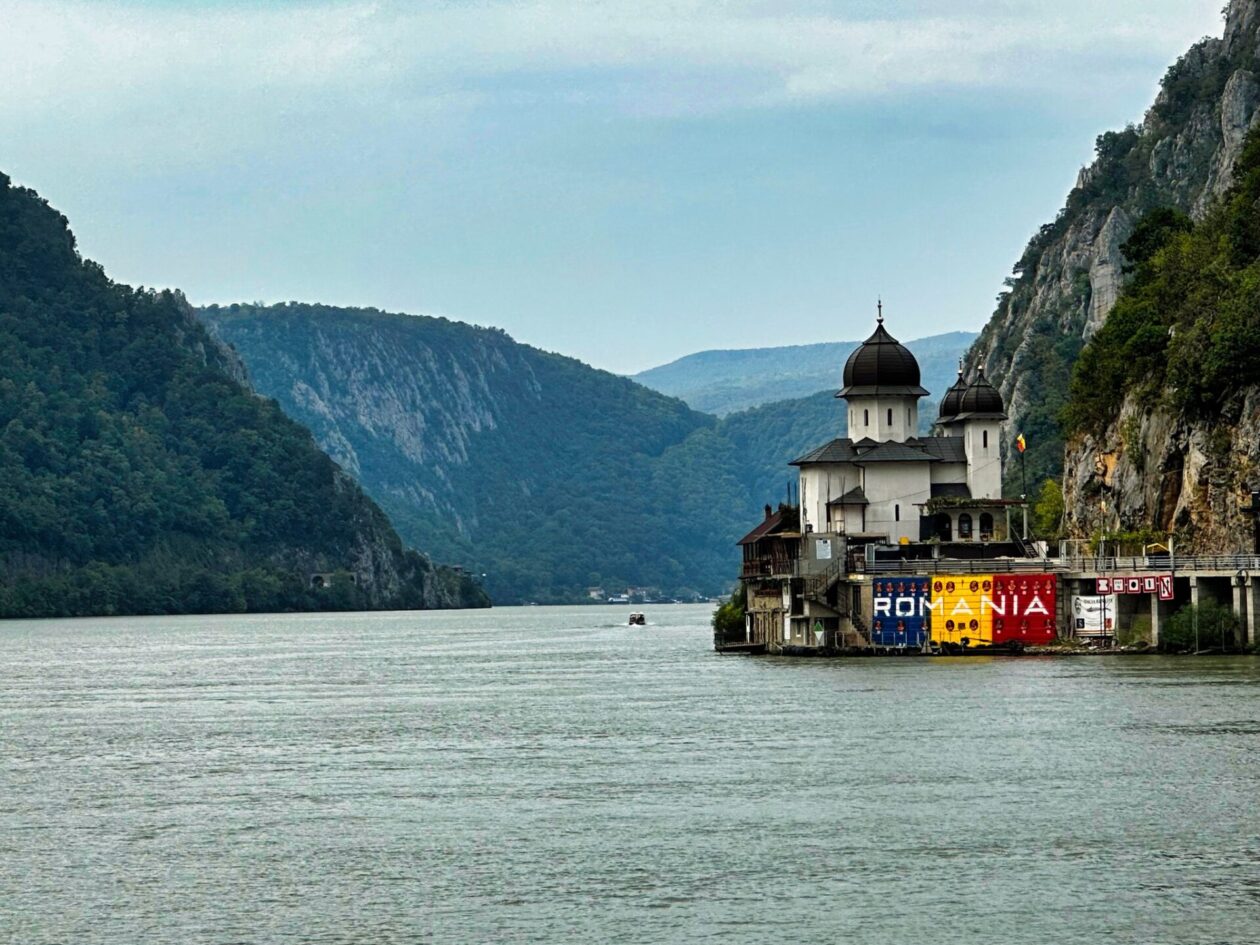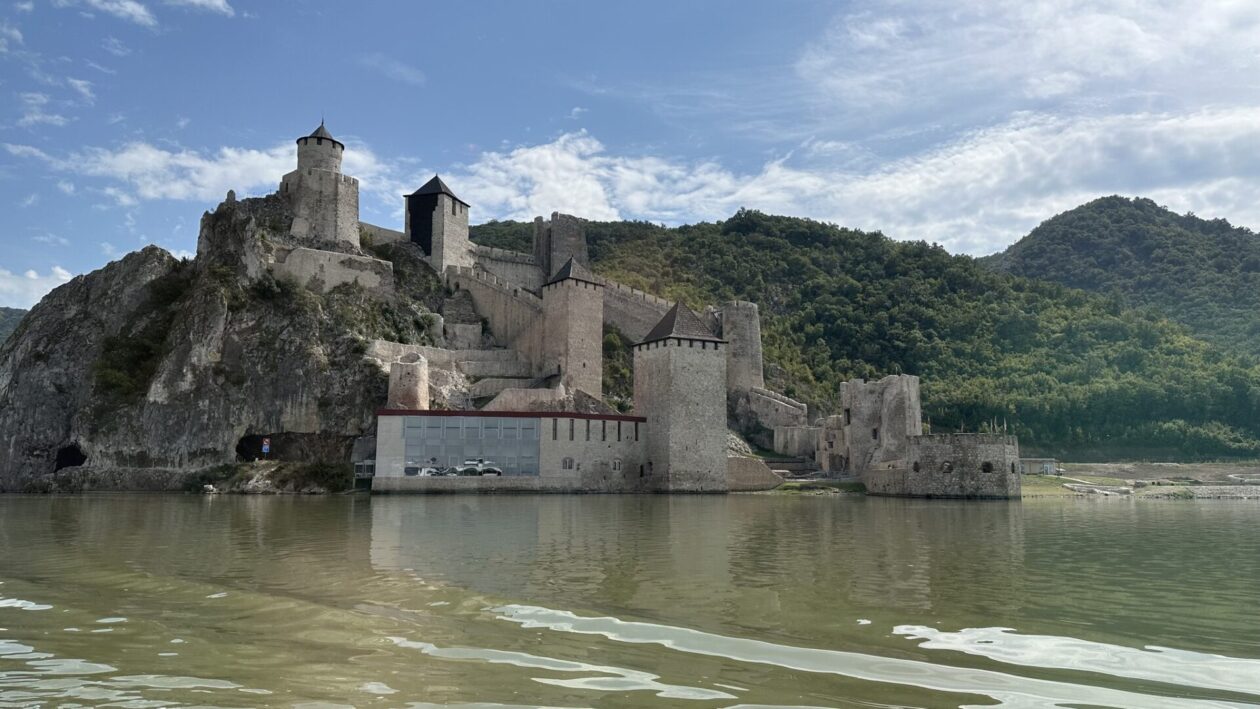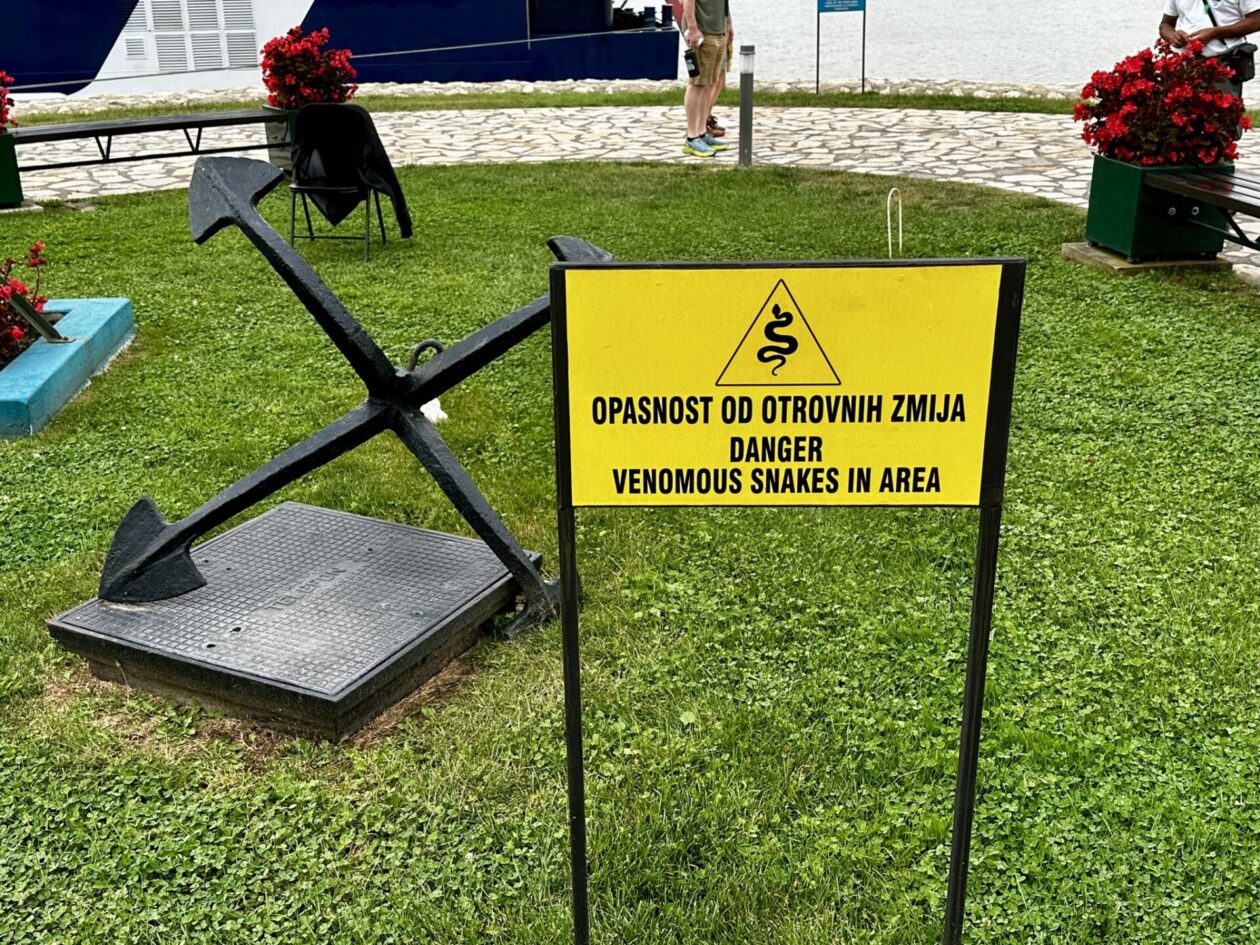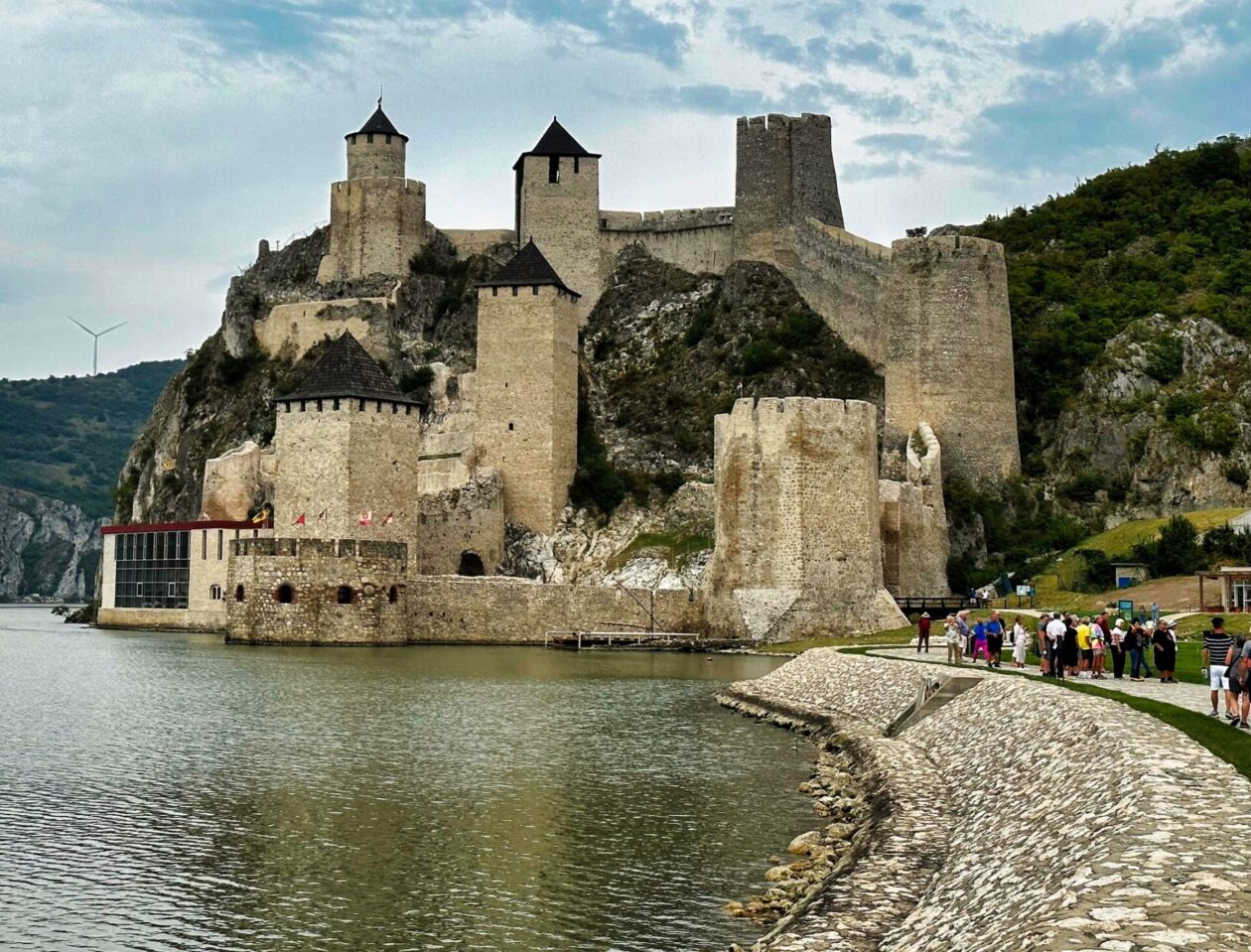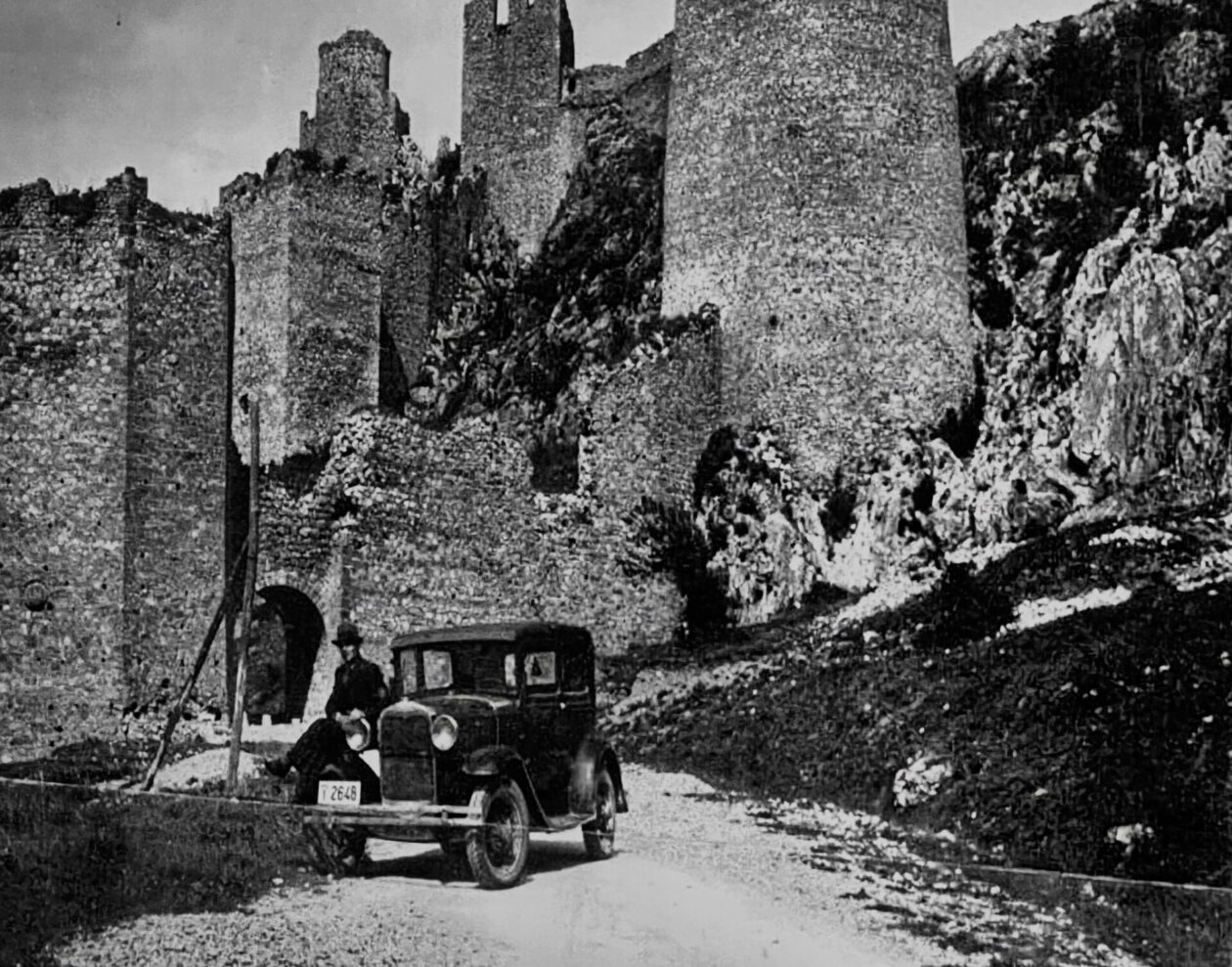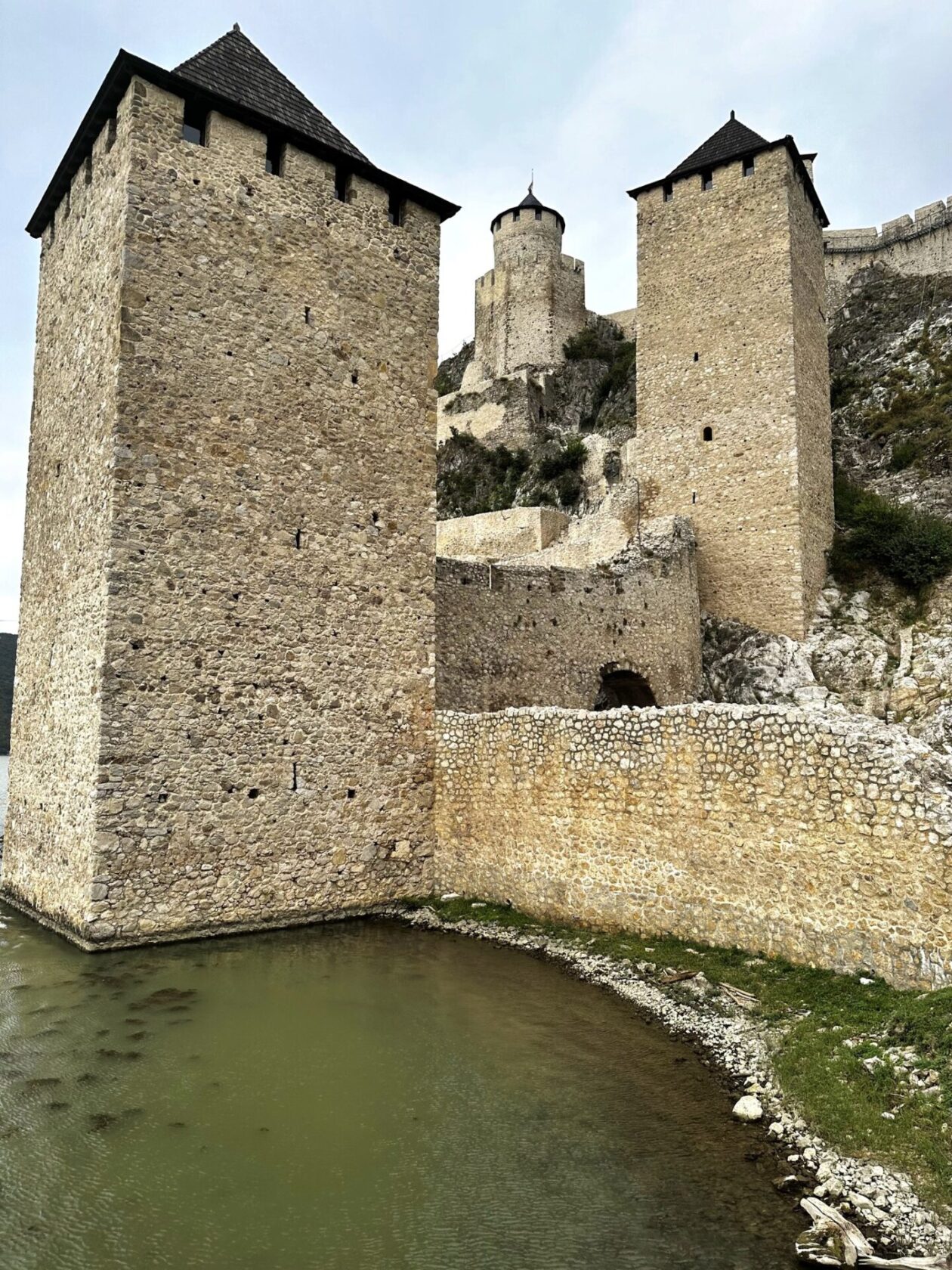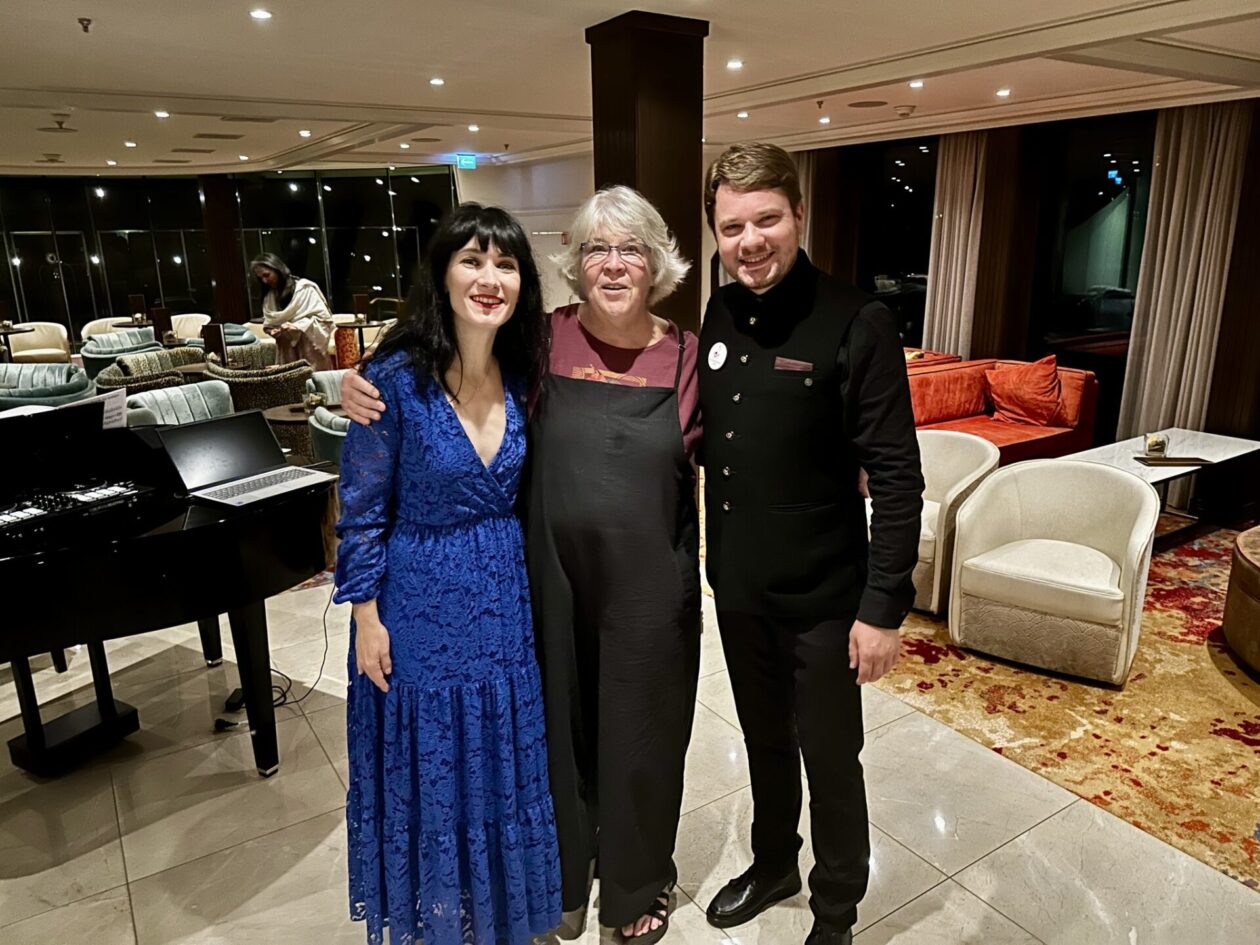This is part of a series called Pan European Sojourn 2023
Show More Posts
- The start of our Pan European Sojourn
- And we’re off — first stop Palma de Mallorca!
- Alicante, Spain
- Sète and Aigues Mortes, France
- St. Tropez and Gassin, France
- Portofino and Camogli, Italy
- Paris and Angers, France
- Bucharest, Romania
- Into the Carpathian Mountains — Peles Castle
- Brasov and Sighisoara, Romania
- Bran Castle and the legend of Dracula!
- Vidin, Bulgaria
- Valiko Tarnavo and Arbanasi, Bulgaria
- Rolling down the (Danube) river and Golubac Fortress, Serbia
- Belgrade, Serbia
- Novi Sad, Serbia and Vukovar, Croatia
- Pécs, Hungary
- Budapest, Vienna, and end of trip
Today was largely a cruising day. In the middle of the night and very early in the morning, we passed through 2 locks. Having through that experience before and after a night of dancing and wild abandon, we chose to sleep in. Later in the morning, however, we passed through the Iron Gates, a 83 mile section of the Danube that includes both the narrowest and widest parts of the Danube River. For much of this transit, we were surrounded by the Balkan Mountains on the Serbian side of the River and the Carpathian Mountains on the Romanian side. Clearly, water carved this massive canyon over millennia, but I’m not sure if glacial action played any role or not. This is a highly protected area with the Romanian side being a national park and the Serbian side a UNESCO Global Geopark. These protections have been emplaced to protect the many cultural and historical sites along the way as well as the diverse flora and fauna. Some of these sites date back to the Roman times.
Later in the day, we stopped at the village of Golubac. For us this marked the end of the Iron Gates National Park. We were there to visit the majestic Golubac Fortress which perches on a cliff at the widest point of the Danube, offering uninterrupted views of Serbia, Romania, and the Danube. While nobody truly knows when this fortress was built (or who built it), it was under continual construction over many centuries with ownership shifting from the Romans, Austro Hungarians, Ottomans, Romanians, and Serbs. From all apparent evidence the strategic importance of this fortress was to protect the ancient road connecting Central and Eastern Europe. The fortress was only recently restored with help from the EU (even though Serbia isn’t an EU member). For many years, the roadway actually passed through the arches of the structure itself. One thing that is clear, however, was that the castle was never successfully sieged. A pretty impressive record. From there we went to sample some of the local food delicacies and wines. Quite a genteel way to explore a fortress!
